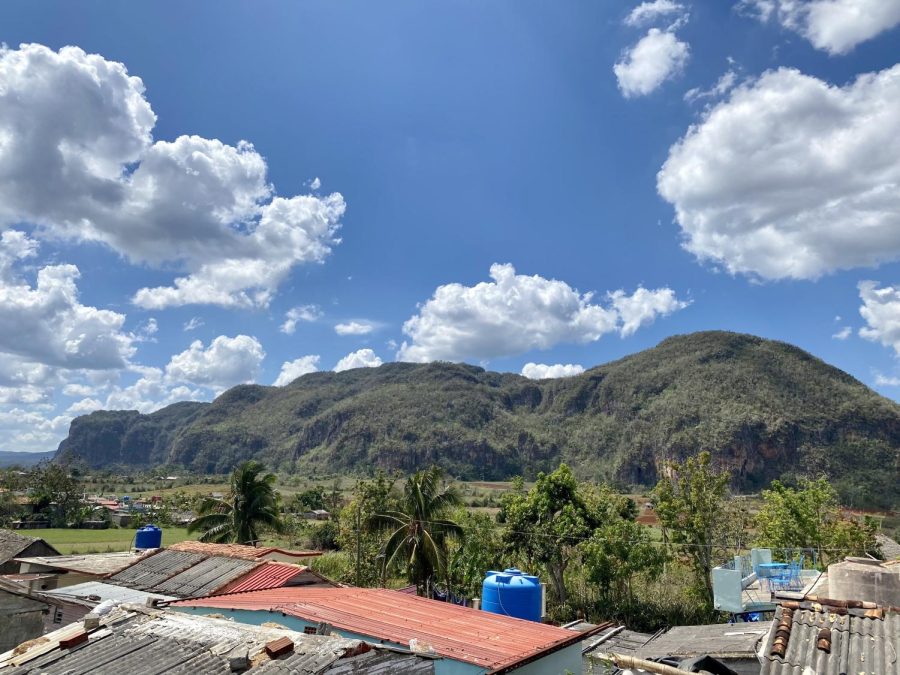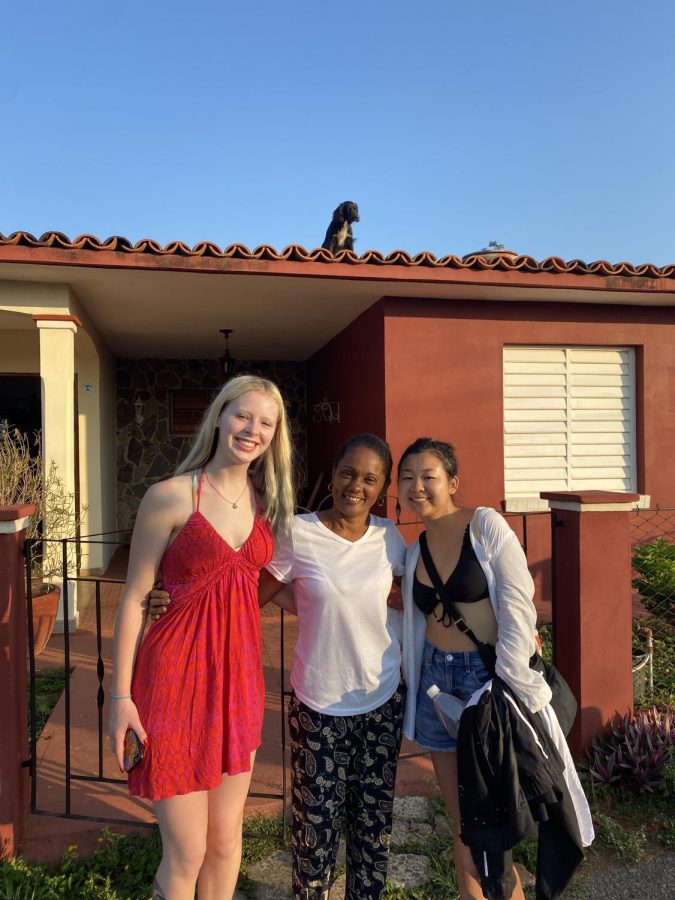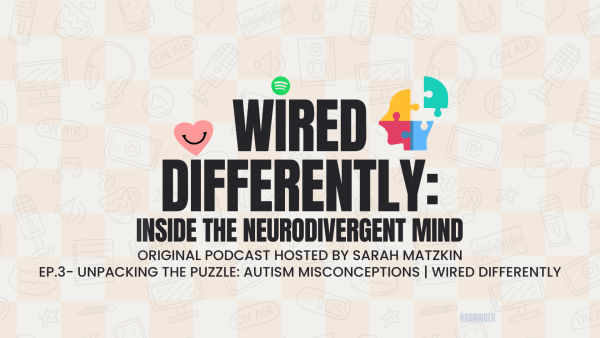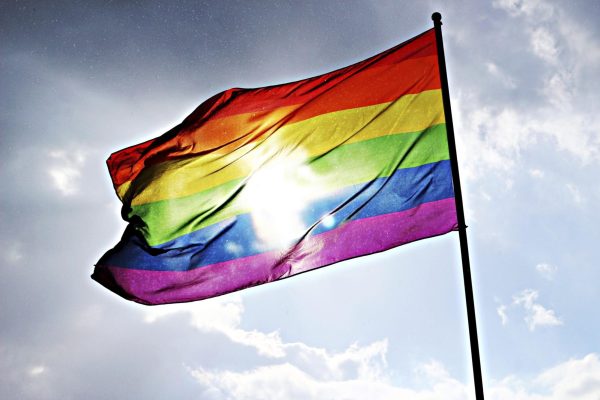Study abroad: Experiencing Cuba, from Havana to Viñales
When you think about Cuba, what do you think of? For many Americans, Cuba’s main features are communism and cigars. However, during our study abroad trip to Cuba through Harper College this spring break, we learned that the country is much more than that; it is a place full of rich culture, vibrant people and a landscape to match.
The complicated political tensions between the United States and Cuba that have existed for decades are unfortunately still a harsh reality today. Due to the United States’ travel embargo against Cuba, which was implemented over 60 years ago, every participant on the trip was required to get a visa to enter Cuba. Without a government-approved reason, such as educational purposes, the average American couldn’t even travel to Cuba.
Our eyes became busy from just walking through the streets of Havana, Cuba’s capital city, darting from one colorful building to the next — beautiful greenery, bright colors, spirited street art; countless people selling goods, working on cars or merely enjoying the day.
The painted buildings, however, contrasted against old, gray, derelict ruins. Since Hurricane Ian last year, many buildings have remained in disrepair, especially due to the trade embargo greatly restricting the availability of supplies and funding needed to fully recover.
Our tour guide in Havana, Andy, told us that families living in Havana would often renovate and decorate the first floors of their homes, but leave the upper levels to degrade — simply out of lack of materials.
Food shortages are also a haunting effect of the U.S.’s embargo on Cuba.
“You go to the grocery store and it’s like being in the apocalypse,” Antonio, one of our tour guides, described to us during the group’s first of many debriefings.
Cubans are BUSY people: most have two or more jobs that they hustle at every day to make a living. Despite all their struggles, the people radiated energy. Everyone we met was smiling – even the people whose sales to us meant dinner for them. The energy of the people made us feel more in touch with the culture.
One night in particular, we went to dinner and were serenaded by a band playing the unique, upbeat Afro-Cuban music that is such a large part of Cuban culture. The food was just as fantastic: a paella-type dish, with chicken legs, bread, ceviche, blackened fish filets and virgin daiquiris. We laughed and tapped our feet to the music while we ate, and afterwards toured the eclectically decorated restaurant’s rooftop area. Houses and restaurants in Cuba are usually filled with greenery, and we admired a massive hanging staghorn fern and climbing golden pothos.
While the dinner was lavish and delicious, it must be noted that the food that we ate in Havana does not reflect how Cubans eat. Certain delicacies, such as meat, are reserved for tourists.
Cuba’s history is reflected everywhere you look. Havana is called the city of monuments for a reason. The streets contained countless artifacts: pieces of the wall, el Malecon, that used to surround Havana during its Spanish colonial rule; sections of an ancient aqueduct, now populated by stray cats and dogs; and many representations of Cuba’s revolutionary history – tanks, bomber planes and more. Paintings and statues of revolutionary leaders and symbols are everywhere, a constant reminder of Cuba’s not-so-distant violent past.
In many ways, we were reminded that Cuba was very much a developing country. We observed lines of Cubans waiting outside of bodegas for snacks, collapsing roofs and stray dogs with visible rib cages roaming the streets. However, despite it being a developing country, Cuba has some of the best medical care in the world, and has reduced homelessness significantly and achieved near perfect literacy rates.
These benefits of Castro’s regime explain Cubans’ divisiveness over his governance and his communist political stance. His policies have led to extreme isolation that has created a unique sense of identity among Cuban people. Attitudes among Cubans toward Castro vary widely, from adoration from the older generation to resentment from the youth.
In the U.S., freedom is one of our greatest principles; in Cuba, freedom is almost nonexistent. Government fear tactics prevent Cubans from speaking out against their leaders. It is also extremely difficult to leave Cuba, even for vacation. For example, Andy, our tour guide, has been trying to move to Canada for years to live with his wife, but government processes there are infuriatingly slow. Many of the people that we spoke with told us that they would love to travel outside of their country, but it is simply not possible due to economic barriers as well as the painstakingly difficult legal processes.
After an eye-opening experience in Havana, we traveled to Viñales, a stunning town in the valleys surrounded by limestone mountains called mogotes. In the U.S., land around these beautiful landscape features would cost millions of dollars – but in Cuba, where land is government-sanctioned, organic agriculture thrives on small farms that respect the land. Cubans don’t have access to the machinery and chemicals that constitute the industrial agriculture of developed countries, so they manage with livestock and human labor. As a result, Cuba has one of the most sustainable agricultural industries in the world.
The town’s main street was lined with colorful restaurants, bars and a large stone plaza with an unused Catholic church at one end. Stray dogs and cats were everywhere, along with old, rattling cars, scooters, and horses that make up Cuban transportation.
On our first hike in Viñales, the natural beauty of the environment was breathtaking. We found the vibrant red earth beautiful, along with vegetation unlike any we had ever seen. Massive ceiba trees – some hundreds of years old – stood proud. As we passed through farms, we saw cows, oxen and horses spotting the land, and chickens – much skinnier than the fat ones we’re used to – roamed freely. Turkey vultures swirled in the air, searching for their next meal. The farms blended in with their surroundings, contrasting the industrial plantations in the U.S. that stick out like sore thumbs.
Through our visits to local farms, we learned that many people in Viñales farm for their entire lives; rising before the sun in the morning and going to bed with the moon at night, every single day. Our horseback riding guide, Yosbel, is a veterinarian and farmer, and his father still runs the farm at over 70 years old.
We were very busy throughout our time in Viñales; taking tours, going horseback riding to caves in the mogotes, visiting plantations, picking up trash, and buying many artisanal trinkets and artworks. One day, we got up early to watch the sun rise over the mogotes, and our day didn’t end until 10 hours later. The exhausting amount of physical activity under the beating midday sun forced everyone to get out of our comfort zones and experience what Cubans do on a daily basis.
Life in Cuba is simple, but not easy. While in Viñales, we lived in a casa particular, which is a common form of tourist accommodation in Cuba. We lived with a mother, named Tania, and her daughter, Tamara, in a beautiful red house with a stunning view of the mogotes. We ate a lot of the same things everyday; assortments of fruits, vegetables, beans, meat and rice, which were slow-cooked to perfection by Tania.
A homemade Cuban meal at the end of the day comforted us as we planned our activities for the night. The dance scene is thriving in Cuba – dances like salsa, meringue, and bachata are a huge part of the culture. We learned to dance Cuban salsa and had fun dancing with the locals. Although we had an early curfew, we made the most of our time and danced the night away — despite our rudimentary dance skills.
Our trip to Cuba was an incredible, eye-opening experience in a world completely different from our lives in the United States. We had the privilege of witnessing the beauty and vibrancy of Cuban culture, as well as parts of its darkness. Although we only spent eight days on the island, our tour guides, Antonio and Arturo, ensured that we learned as much as possible during our limited time.
Cuba’s lively charm and friendly warmth of its people enamored us all; and getting a taste of this special Caribbean island has made us more appreciative of the privileges we have in the United States, while enticing us to have more global experiences in the future.
We encourage you to make the most out of the opportunities presented to you to travel; there are many wonderful trips you can take through Harper College that will leave you with a broader mindset and stronger sense of identity. So, travel – whenever you can, and don’t just be a tourist. Talk to people, share meals with them, explore, and take risks; the true experience is found in the culture – and not just the pretty parts.








